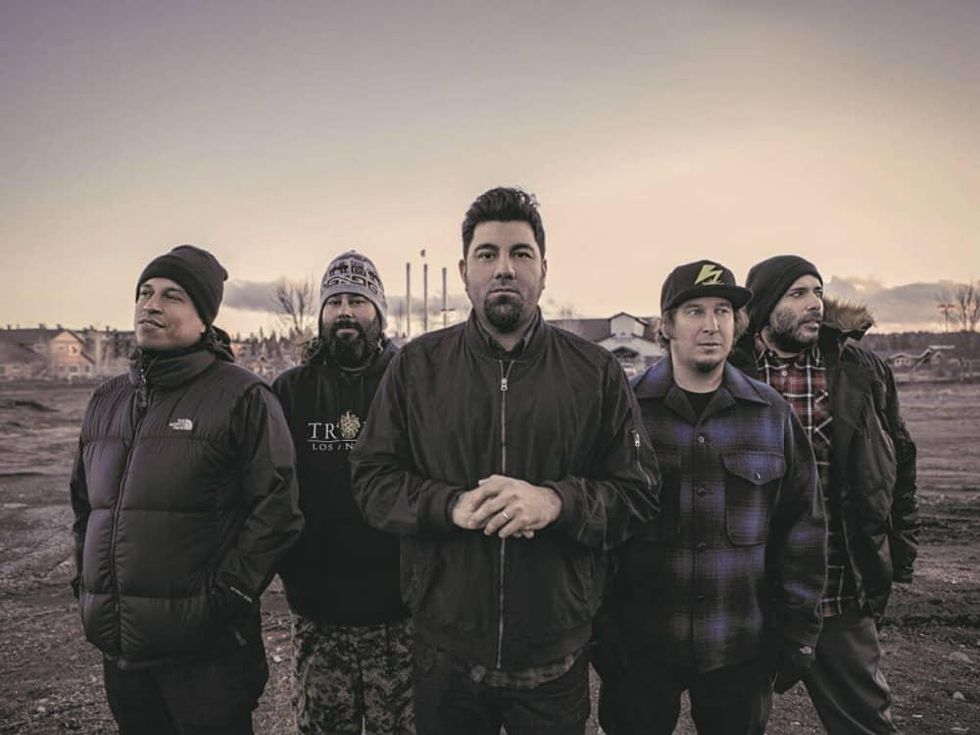Next concert Nov. 5
In season opener, Shepherd School Symphony tames a beast of a program
 Photo by Tommy Lavergne/Rice University
Photo by Tommy Lavergne/Rice University Cho-Liang Lin with Larry RachleffPhoto by Tommy Lavergne/Rice University
Cho-Liang Lin with Larry RachleffPhoto by Tommy Lavergne/Rice University- A standing ovations was in order.
"Try to sound more expensive," Larry Rachleff, professor and music director of the Shepherd School Symphony and Chamber Orchestra, said as a directive while rehearsing Mozart's Symphony No. 35 "Haffner."
Hysterically absurd, yet precisely descriptive and accurate. It was just those words that affixed a socialite finesse and joyful lilt to the peppy Finale nearly 10 or so years ago, something I remember unambiguously as a classical musician-in-training at Rice University.
That is maestro Rachleff, though he prefers to be called by his first name. He has the gift of words, an intangible je ne sais quoi, that pulls just the right musical affect from each of his students, collectively crafting a vibrant orchestra such that Shepherd School of Music concerts rival in popularity — and caliber — to those by the Houston Symphony.
A sold out audience listened to the next generation of professional musicians interpret Hector Belioz's Roman Carnival Overture, Sergei Profofiev's Violin Concerto No. 2 in G Minor showcasing the nimble fingers of violin faculty, Cho-Liang Lin, and Gustav Mahler's Symphony No. 1 in D Major "Titan."
The opening Shepherd School Symphony Orchestra concert of the 2011-12 year was no exception. A sold out audience — with plenty on a wait list for a seat — listened to the next generation of professional musicians interpret Hector Belioz's Roman Carnival Overture, Sergei Profofiev's Violin Concerto No. 2 in G Minor showcasing the nimble fingers of violin faculty, Cho-Liang Lin, and Gustav Mahler's Symphony No. 1 in D Major "Titan."
Yes. A beast of a program, one that tested the ensemble as a whole just as much as individual contributions.
Other than Berlioz's Symphonie Fantastique, which requires a larger orchestral force, Roman Carnival Overture is the composer's most popular and most performed work. It's tuneful, ebullient, has a languid English Horn tune and plenty of brass fireworks in a triple meter framework. Lots to love.
To the naked ear, it could appear that the concert opener just plays itself.
Wrong. It's filled with tricky entrances, off the beat patterns and a puzzle of melodic fragments senseless to the individual performers but significant when assembled. The work's complex textures require watchful and sensitive balancing.
And the Shepherd School Symphony Orchestra students were up to the task. From the first downbeat, off to the races they were with gripping rhythmic precision, just as thrilling as the general pauses. The Andante had a lovely forward ambling pace with the string pizzicatos supporting a nostalgic country-esque and beautifully phrased English Horn solo at the hands of Geoff Sanford.
It's impossible not to smile while listening to the piccolo flourish the transition into the Allegro Vivace. Giddy up, this was quite the ride such that audible sighs from those holding their breaths emerged after the cutoff of the last jubilant chord.
Technical proficiency should always be at the service of musical ideas and violinist Cho-Liang Lin, appointed professor of violin in 2006, demonstrated exactly how that philosophy manifests itself when performing one of the bloodbaths of the repertoire. Sergei Profofiev's Violin Concerto No. 2 is not for the weak. As the program notes read, Jascha Heifetz considered it one of the six greats which included concerti by Beethoven, Brahms, Tchaikovsky, Sibelius and Elgar.
While the orchestra played with spectral transparency, Lin was free to add just the right amount of hesitation and emphasis when artistically appropriate. Alongside Rachleff, they were musically connected at the hip.
In the somewhat dark and whimsical Allegro, ben marcato — the stuff that would accompany a naughty, gimpy Addams Family dance number — Lin rocked it, sultry at times, appropriately misbehaved at others.
It's hard to conceive that Gustav Mahler was only 27 years young — just a few years senior than some of the students on stage — when he finished his first symphony, more so, that it wasn't received well in its first performance in Budapest in 1889. It would take Mahler another seven years to perfect it and reach the four-movement poem we are accustomed to hearing today.
Mark your calendars. Next Shepherd School Symphony Orchestra concert is set for 8 p.m. Saturday, Nov. 5 with an equally ambitions program.
The opening seven-octave drone is unforgiving. From a bass low A to an up-in-the-stratosphere violin harmonic, Mahler creates a foggy screen from which sylvan sounds awaken, first in the winds, followed by a regal hunting fanfare in the off stage trumpets and the cuckoo of the clarinet. The first piccolo, oboe and clarinet entrance is dreadfully tough. Musicians have to grab their pitches out of thin air. Though the tuning gods weren't smiling at first, it didn't take long for the savvy students to find their tonal center.
Imagine waking up to murmuring brook, the cheery chirping of a single amiable bird, a genteel puff of air, a promenade through rolling berms. That's, in essence, the first movement as performed that evening. Such narrative imagery was layered at the hands of a colorful orchestra that put meaning into every phrase.
I can't envisage a more stylistically delicious second movement. Based on the Ländler, the Austrian precursor to the Viennese waltz, the music evoked imagined tableaux of butter churning and beer drinking morphed into a refined ballroom mise en scène with plenty of twirling, birdie included. The strings, smooth as silk.
If there was an orchestral highlight in the closing piece, it would have to be awarded to the basses for their soli in the Funeral March and the horns for their superhuman accuracy.
Mark your calendars. Next Shepherd School Symphony Orchestra concert is set for 8 p.m. Saturday, Nov. 5 with an equally ambitions program: Dvorak Symphony No. 8 in G Major, Bartók Dance Suite and Respighi's colossal (and thunderous) Pines of Rome.






